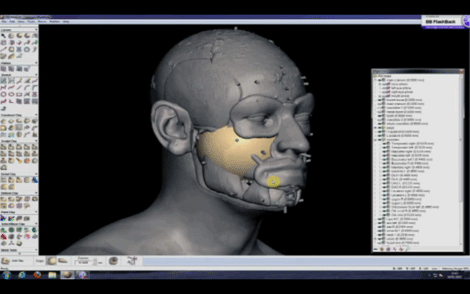
Footage from the Channel 4 documentary showing how archaeologists reconstructed the face of Richard III
Old King Richard III lasted only two years on the throne, all of which shrouded in controversy, but it took far less time to recognise his remains using the latest 3D tools.
Once archaeologists unearthed the remains of Richard III from beneath a former multi-storey car park, lost for over 500 years, while the scientists were running DNA testing to confirm the skeleton was his, modern reconstructive scanning and modelling technologies were used to reconstruct the face of Richard III.
After unearthing the remains, Caroline Wilkinson, professor of craniofacial identification at the University of Dundee, guided the facial reconstruction project. The team used Geomagic Freeform and CT scans of the monarch’s skull to digitally sculpt his facial features.

The most famous portrait of Richard III, and the model [below] built using the 3D CAD data
Freeform’s digital workflow and intuitive modelling platform allowed them to efficiently complete the project and do so with a great degree (often 2mm) of accuracy, with stunning results that show the world what the last king of the House of York looked like.
Along with the skull, the excavation unearthed a number of skeletal features, including a very curved spine that corresponds with one of the most frequent descriptors of Richard III: hunchbacked. DNA tests confirmed beyond reasonable doubt that they were indeed Richard III’s remains.
If you’re in the UK you can watch the full documentary here, or in the US you can watch an edited version here.






